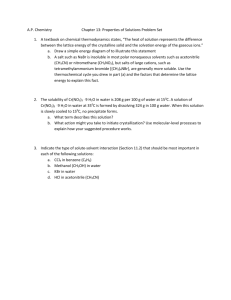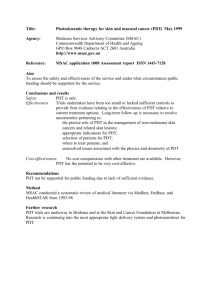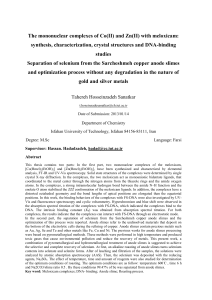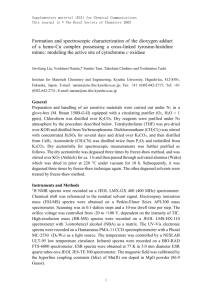Thesis Abstract - Professor H. Hadadzadeh
advertisement
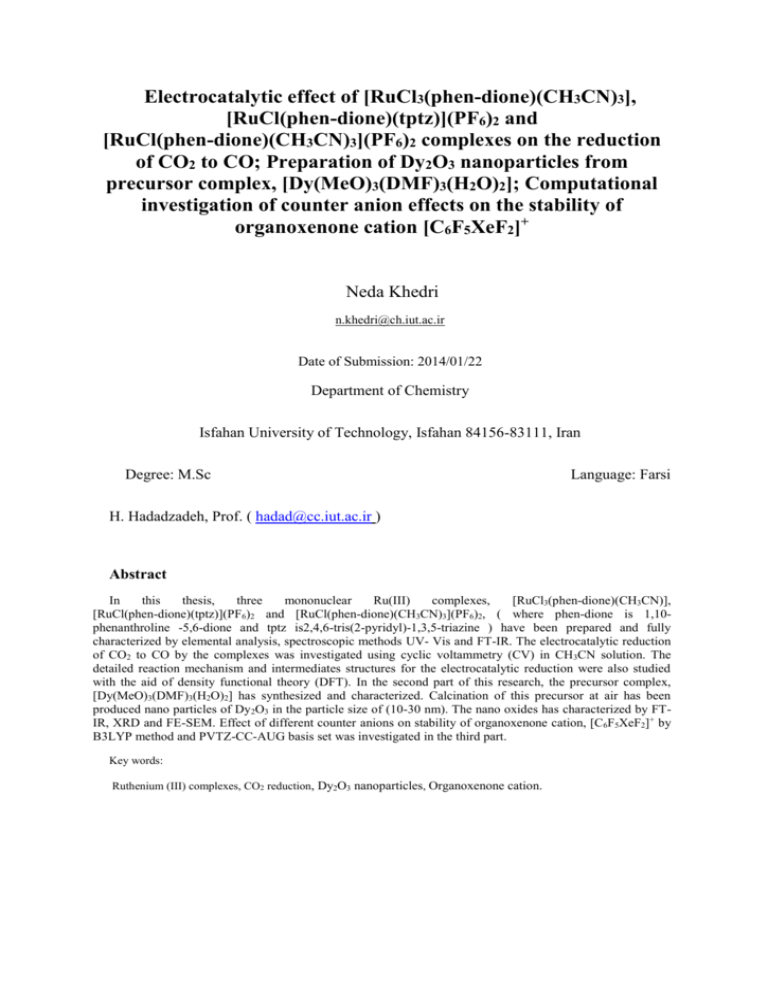
Electrocatalytic effect of [RuCl3(phen-dione)(CH3CN)3], [RuCl(phen-dione)(tptz)](PF6)2 and [RuCl(phen-dione)(CH3CN)3](PF6)2 complexes on the reduction of CO2 to CO; Preparation of Dy2O3 nanoparticles from precursor complex, [Dy(MeO)3(DMF)3(H2O)2]; Computational investigation of counter anion effects on the stability of organoxenone cation [C6F5XeF2]+ Neda Khedri n.khedri@ch.iut.ac.ir Date of Submission: 2014/01/22 Department of Chemistry Isfahan University of Technology, Isfahan 84156-83111, Iran Degree: M.Sc Language: Farsi H. Hadadzadeh, Prof. ( hadad@cc.iut.ac.ir ) Abstract In this thesis, three mononuclear Ru(III) complexes, [RuCl3(phen-dione)(CH3CN)], [RuCl(phen-dione)(tptz)](PF6)2 and [RuCl(phen-dione)(CH3CN)3](PF6)2, ( where phen-dione is 1,10phenanthroline -5,6-dione and tptz is2,4,6-tris(2-pyridyl)-1,3,5-triazine ) have been prepared and fully characterized by elemental analysis, spectroscopic methods UV- Vis and FT-IR. The electrocatalytic reduction of CO2 to CO by the complexes was investigated using cyclic voltammetry (CV) in CH 3CN solution. The detailed reaction mechanism and intermediates structures for the electrocatalytic reduction were also studied with the aid of density functional theory (DFT). In the second part of this research, the precursor complex, [Dy(MeO)3(DMF)3(H2O)2] has synthesized and characterized. Calcination of this precursor at air has been produced nano particles of Dy2O3 in the particle size of (10-30 nm). The nano oxides has characterized by FTIR, XRD and FE-SEM. Effect of different counter anions on stability of organoxenone cation, [C6F5XeF2]+ by B3LYP method and PVTZ-CC-AUG basis set was investigated in the third part. Key words: Ruthenium (III) complexes, CO2 reduction, Dy2O3 nanoparticles, Organoxenone cation.
